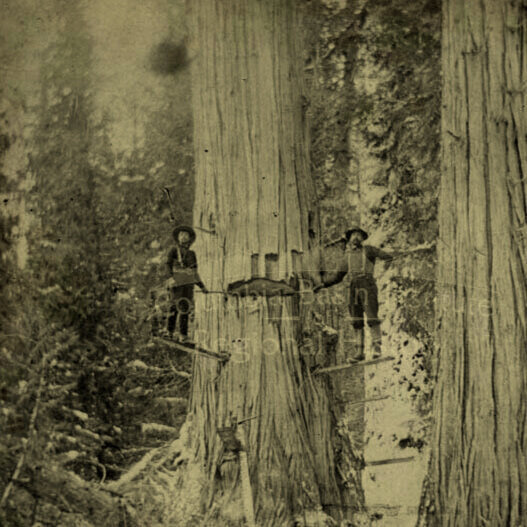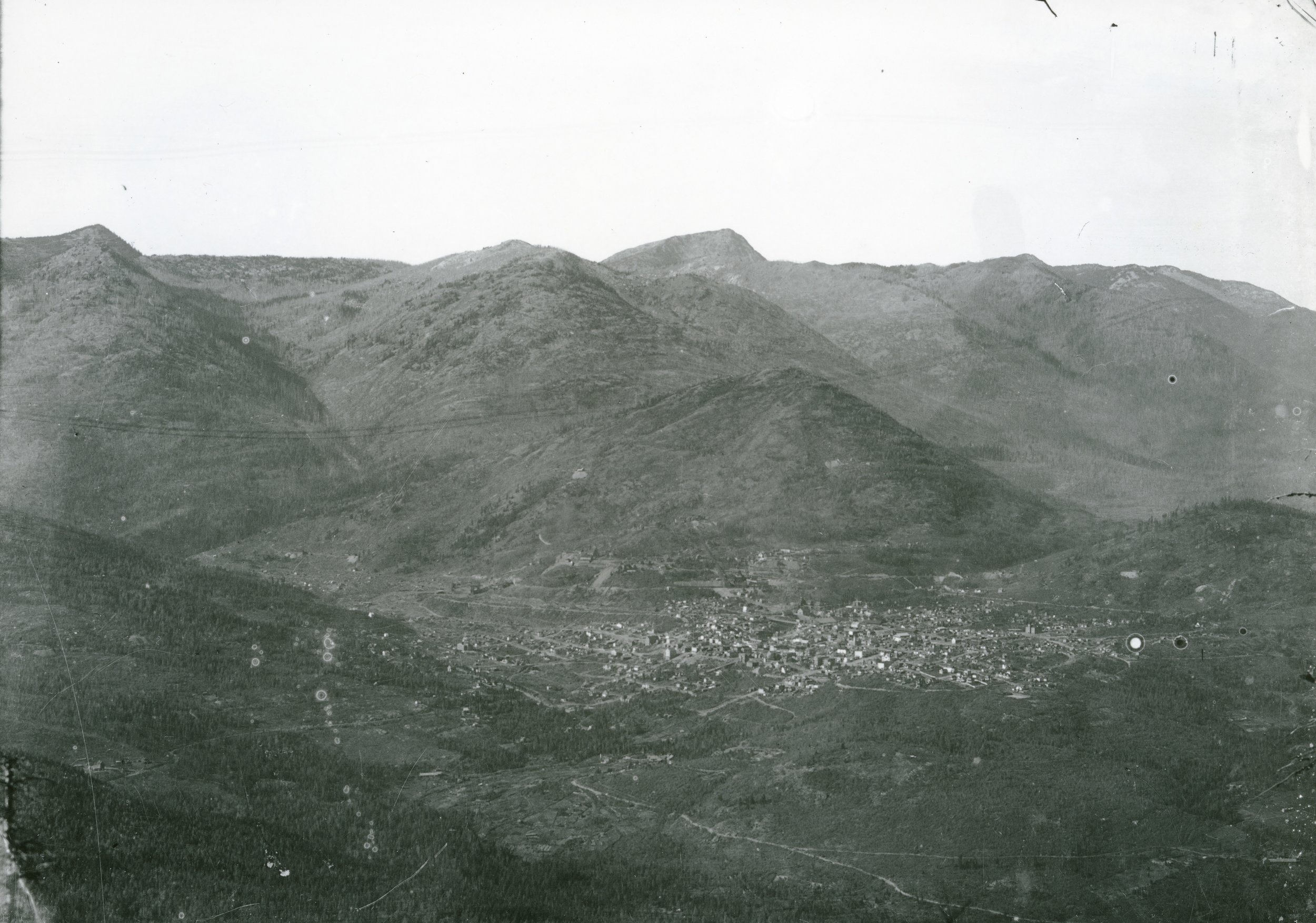Logging in the West Kootenays
The cedar log found on display in the museum’s upper bench is a reminder of the historical legacy of the logging industry in British Columbia. In the West Kootenays, logging came hand-in-hand with the mining camps, which began populating the area in the 1890s. Land needed to be cleared for mining operations and settlements, and timber was needed for infrastructure. As these settlements grew into prosperous boomtowns, even more logging was necessary for the building of railways that connected these places to the rest of the world.
From here, BC’s forestry industry - including the temperate forests of the West Kootenays - continued to grow. By 1917, BC cut the most timber annually of any other province, and by 1920, the province produced half of all of Canada’s timber. To this day, forestry remains an integral industry for the province of BC.
The Sinixt Nation
Although logging was praised among the colonial communities that moved into the West Kootenays in the late 19th century, one must also consider the history of the original inhabitants of the West Kootenays: the Sinixt Nation.
The Sinixt
Labelled as extinct by the Canadian government in 1956 despite their continued existence, and often confused with other neighbouring Indigenous groups, the history of the Sinixt First Nation that lived here before the mining camps and continued to live in the area has largely been ignored. However, it is important to acknowledge that the West Kootenays, as well as Rossland in particular, is a key part of the Sinixt Nation’s traditional land. Sinixt territory stretches north of Revelstoke, BC down south of Kettle Falls, Washington and encompassing an area west of the Arrow Lakes and just east of Kootenay Lake. Before it was coveted for the gold which lay within, Red Mountain - on the outskirts of where Rossland now lies - was an important berry-picking site for the Sinixt people. A 2019 BC Supreme Court decision upheld an earlier 2017 decision affirming Sinixt indigenous hunting rights regardless of their country of birth. It’s fair to expect that the Sinixt Nation will continue to press for recognition of title and other rights in their full territory.
The Impact of Logging
Logging, alongside the mining camps that brought it and the logging camps it led to, greatly impacted the Sinixt people. Not only did these new booming industries alter the natural environment that the Sinixt relied on, but these non-indigenous camps were often not respectful towards the indigenous people they encountered. The destruction of the land, encroachment on village, agricultural, and cultural sites, and hostility from the boom towns have led the Sinixt to increasingly utilize the southern reaches of their territory since the beginning of the 20th century, with few to no permanent settlements existing in Canada for several generations now. Moreover, the creation of the Colville Indian Reservation in Washington drew in some of the community. The displacement of Sinixt communities caused by the development of boom towns and industries in the West Kootenays should not be overlooked.
For more information on the Sinixt, visit their website here: http://sinixtnation.org/content/about-us
Continue the Outdoor Tour:
Contribute your own memories/experiences of logging or other impacts on the land, the Sinixt people, or the Rossland community:
The form below will email us your message. If you prefer to speak to us directly or have other questions or comments about this page, please call (250) 362-7722 or email the archives directly at archives @rosslandmuseum.ca




